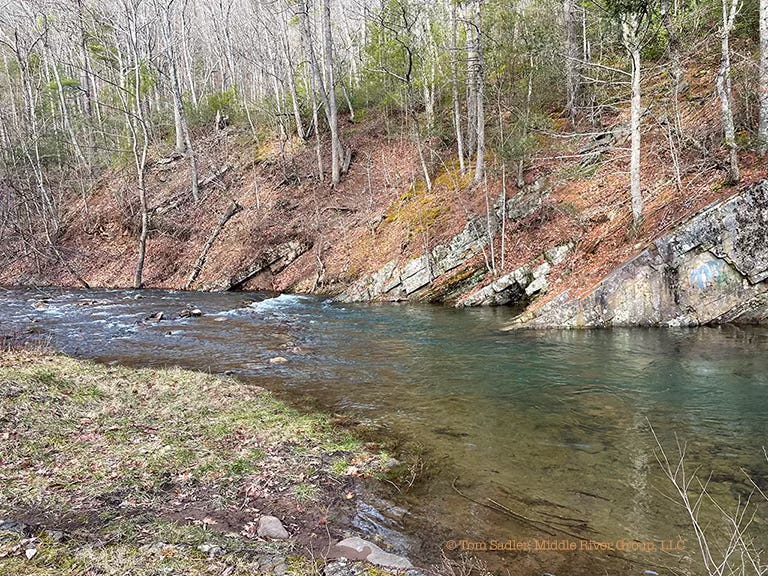Astute readers know I teach and guide for Mossy Creek Fly Fishing. In their newsletter this week they offered an excellent suggestion, full of useful information for fishing streamers. It’s a very effective technique that’s easy to use. It’s copied below.
If you don’t already get their weekly updates, you should. Sign up here.
A SIMPLE WINTER TROUT FISHING TACTIC
TRY "NYMPHING" WITH STREAMERS
Although the days are getting longer and we will experience some days in the 60's this week water temps will still be cool and fronts passing through can create some slower days. Cold water and pressure changes can create what feels like unreasonably slow fishing some days in the winter.
When water temps are in the upper 30's or low 40's trout aren't going to be very active. They will still feed but metabolism also slows to a point they don't need to feed as much as when water temps are warmer. Fishing small nymphs will sometimes not entice fish to move very far for a meal. Fishing a larger (higher caloric value) pattern can sometimes increase the number of strikes you get on a slow day.
Fishing a streamer pattern like rubber legged crystal buggers and golden retrievers can be incredibly effective and it is a tactic we use all the time. While you can accomplish this with a Euro rod we are primarily drifting these patterns under a strike indicator and covering huge sections of water.
Adjust your indicator so your fly will drift near the bottom of the run or hole you are fishing. Cast upstream as far as you'd like and pick up your slack as the indicator drifts back to you. Let the rig pass you and you can fish it further downstream or let the fly swing. Sometimes the direction change of the fly will trigger a strike. You can also begin to the retrieve the fly at the end of the swing to see if a following fish prefers a faster moving fly.
If fish are feeding on the dead drift continue fishing upstream. If the fish tend to take the fly on the swing or the strip, get on a path to fish downstream. You can always bump, strip, or twitch your fly while it is dead drifting to give it a bit of action. This tactic works great on stocked streams, the spring creeks, and even on our mountain brook trout.
We fish the largest sized crystal buggers in size 6 under a 1/2" indicator. You will want to choose flies that look natural just drifting. A baitfish patterns like a kreelex (best fished with fairly aggressive stripping) will not work effectively under an indicator. Buggers, leeches, small sculpin patterns, are your best options.
For indicators, Oros, Air-Locks, and Float Masters are preferred as they can all be easily adjusted up or down your leader to get your fly to the preferred depth.
Flies, indicators and anything else you need are available at Mossy Creek Fly Fishing.
Here are some additional thoughts…
Fish with me long enough and you know I’ve got a love-hate relationship with indicators. Generally, I’ll opt for a dry fly over an indicator. My dislike of indicators comes from having fish trying to eat them. It drives me crazy. If I’d used a dry when that happens, I might have caught it.
My bias against indicators notwithstanding, they are indeed a very handy tool, as explained in the article by Mossy Creek Fly Fishing. The key thing is the ability to change the depth of your fly in the water column. If you use a dry, you need to retie it to change depth. That takes time, and it can be a hassle. I know I’ve been lazy and have certainly missed fish because of it.
If fish aren’t feeding on the surface, as is often the case in the winter and early spring when I’m fishing a long run or deep pool, I’ll reach for an indicator. In the summer on the spring creeks in the middle of the day, it’s often my method of choice to see if I can coax a lazy mid-channel rainbow to come out to play.
Weight for it…
Thinking about indicator rigs got me thinking about weight. One reason I love fishing mountain streams is the variety of water. I use regular nymphs, as opposed to bead heads, for the same reason I use indicators, adjustability. I can add or subtract weight as needed depending on the water I’m fishing. Changing weight rather than flies really appeals to me. Combine that with the adjustability of indicators and it’s hard to beat for convenience.





Thanks Tom. I enjoy every article you post but after getting skunked on the last 3 outings I really appreciate your thoughts.